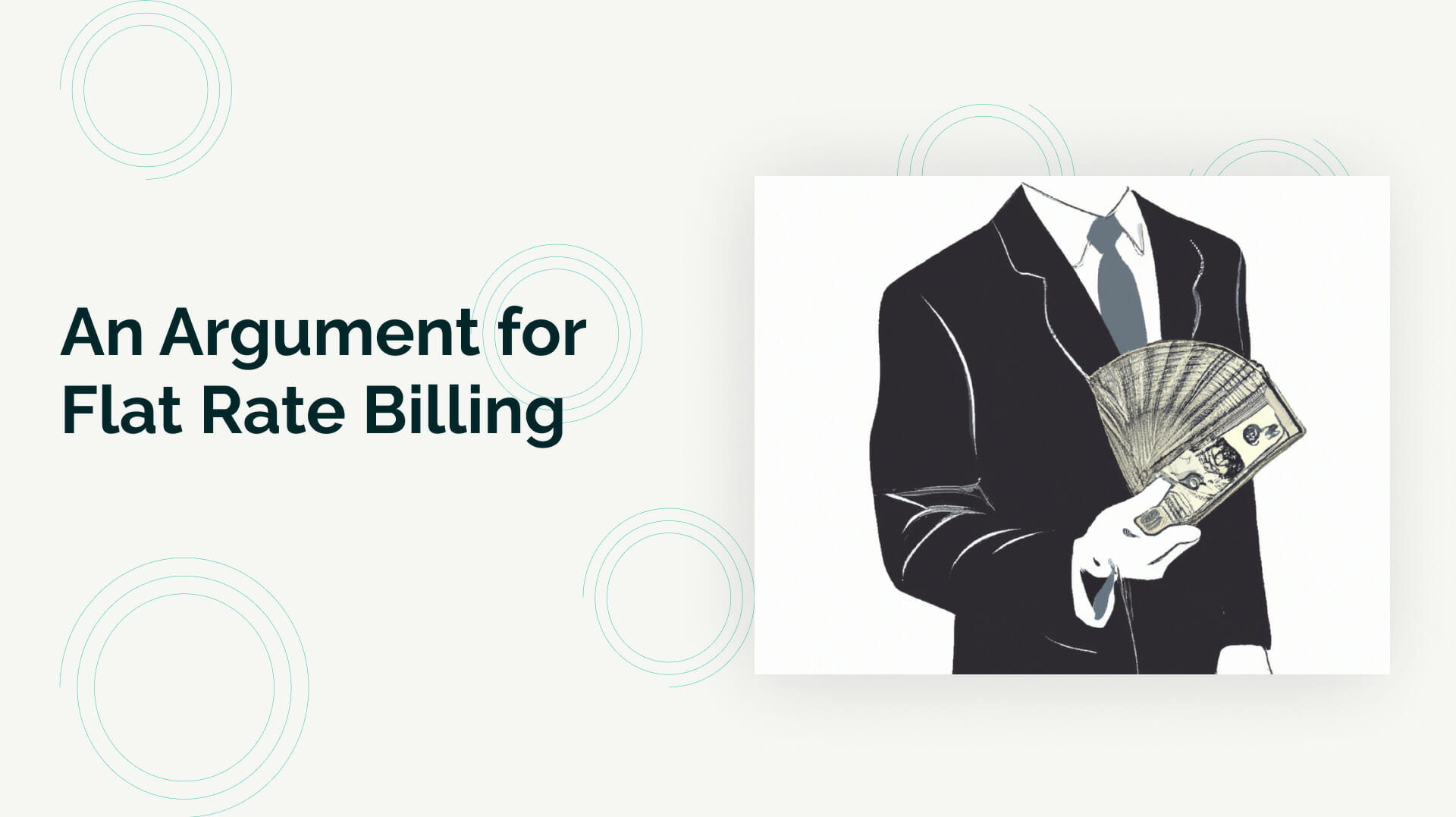An Argument for Alternative Fee Arrangements (AFAs)

People have been calling for the “death of the billable hour” for longer than I’ve been an attorney, but – to no one’s surprise – it remains.
No one is surprised because ripping-and-replacing law firms’ business models is a monolithic task that necessitates buy-in from attorneys who are willing to take risks that cloak their revenue model in uncertainty.
Litigation budgets are the closest thing to an AFA in common practice.
The problem with litigation budgets is law firms’ inability to leverage their historical data to accurately estimate actual costs/margins.
And even if a firm leveraged its data to make a perfect litigation budget, the firm’s margins are still bound by the requisite billable hours.
Flat-rate fee structures are, in my opinion, the best way forward because (1) we already undertake the same underlying cost/benefit analysis when preparing litigation budgets, and (2) if leveraged properly, they can free a firm from inflexible margins.
Leveraging the flat-rate fee structure model “properly” requires a tool that not only structures mountains of historical data of various shapes and sizes but also derives provably profitable insights.
This hypothetical tool (I’ll call it “Billex”) could take your firm’s timesheets and expense reports and provide you with a breakdown of legal tasks complete with their respective rates and dispersion measurements of hours, costs, and margins.
Billex could, for example, analyze your firm’s timesheets and expense reports and determine the following about how much it costs your firm to draft an answer to a complaint (assume the average cost of an associate per hour is $139):
> 20% of the time, it takes up to 2 hours ($278),
> 50% of the time, 2 – 4 hours ($556), and
> 30% of the time, 4 – 12 hours ($1,668).
Taking the higher end of each hourly range, billing $400 an hour would see the following margins:
> $522 – 20% of the time,
> $1,044 – 50% of the time, and
> $3,132 – 30% of the time.
Your firm’s margins’ weighted average for drafting an answer would then be $1,566. The longer your associates take, the more money you make.
A flat-rate fee that incorporated your historical average margin and risk-adjusted cost would total $2,400 per answer:
> 20% of the time, your margins are at least $2,122,
> 50% of the time, $1,844, and
> 30% of the time, $732.
Your margins’ weighted average would still be $1,566 per task – but the more efficiently your associates work, the more you make.
However, flat-rate billing structures are nevertheless probabilistic, while billable hours are less so. Hence they remain.
Legal tech is shifting this calculation.
Will firms – like casinos – be willing to take the occasional hit in order to reap the rewards borne of statistical probability?